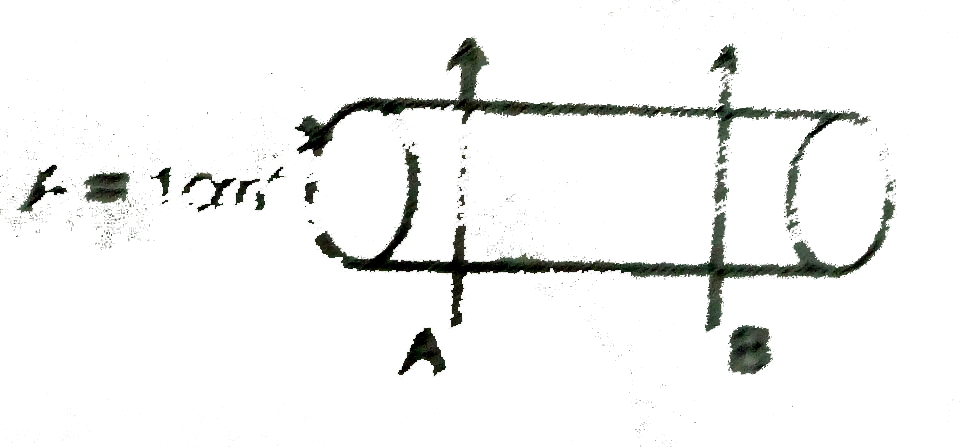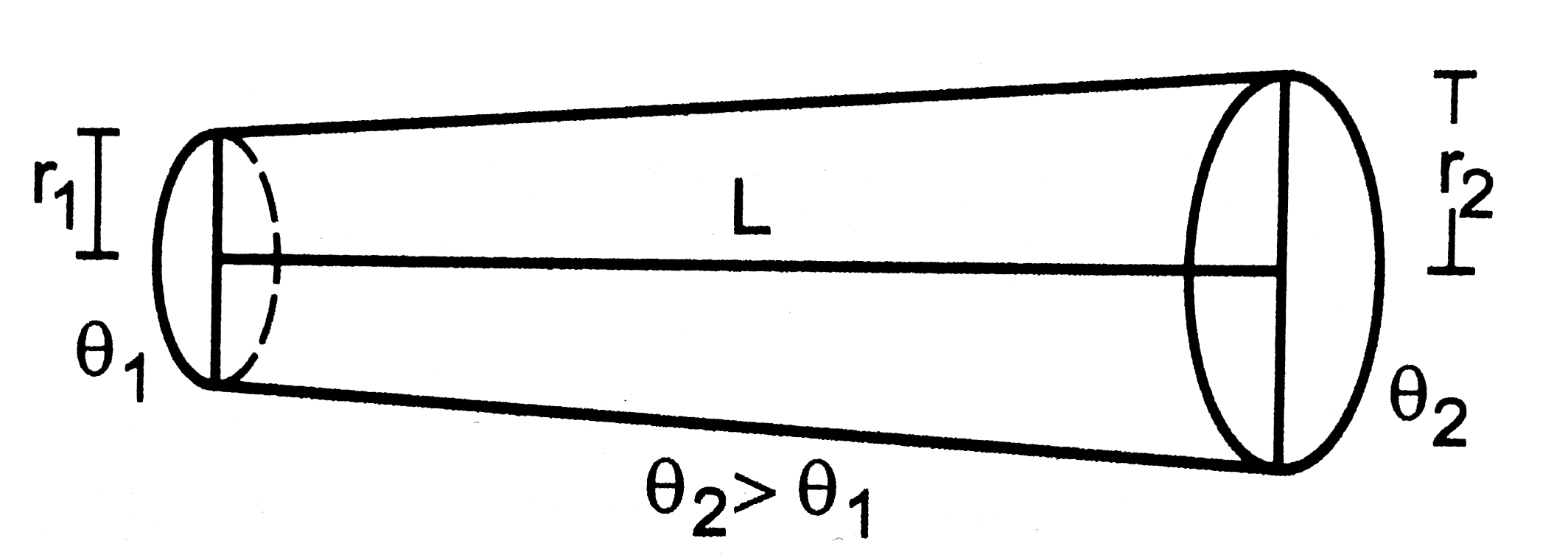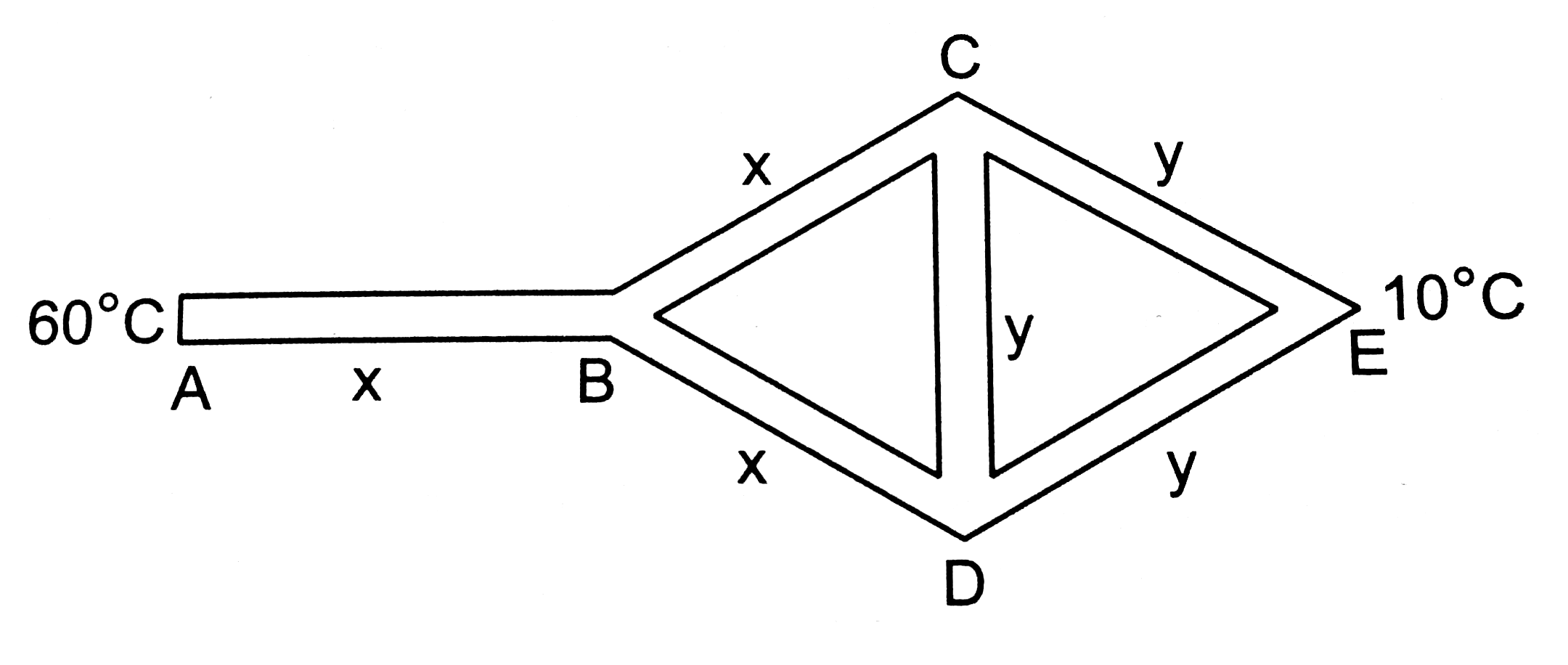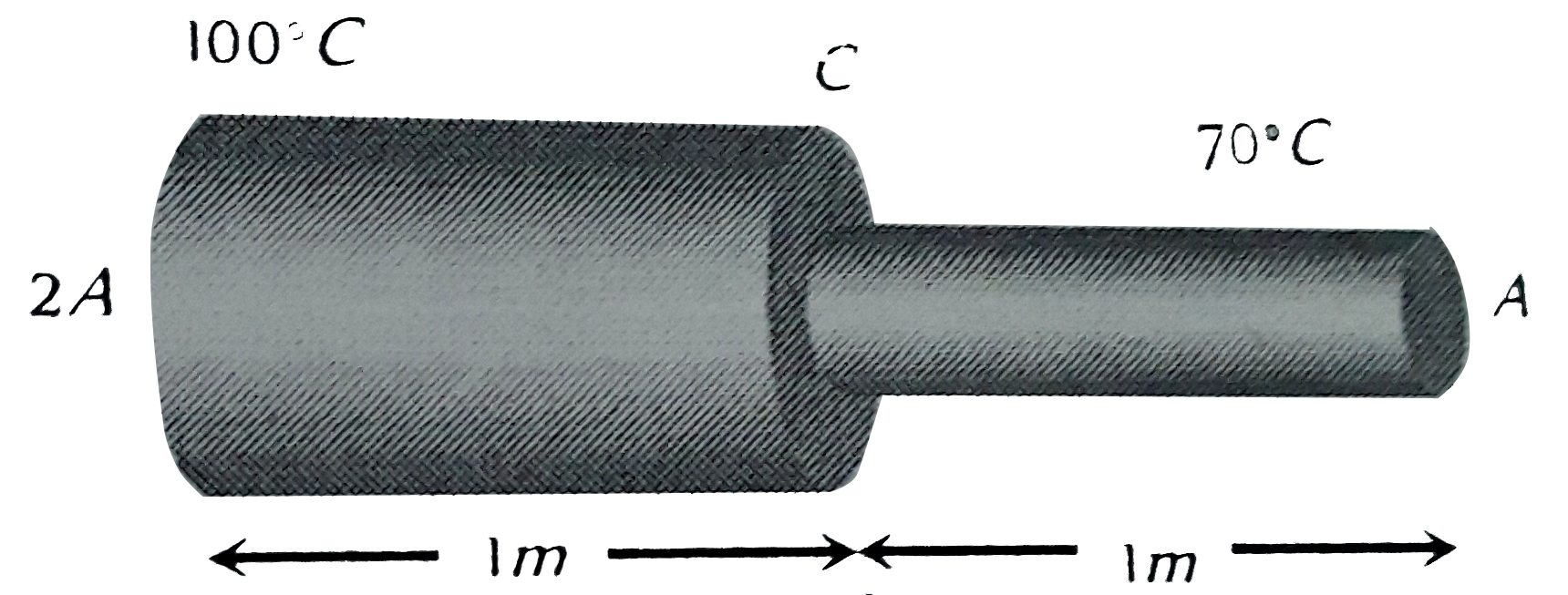A metal rod of cross sectional area 1.0cm2 is being heated at one end. At one time , the temperature gradient is 5.0∘Ccm−1 at cross section A and is 2.5∘Ccm−1 at cross section B. Calculate the rate at which the temperature is increasing in the part AB =0.40J∘C−1 , thermal conductivity of the material of the rod. =200Wm−1^(@)C^(-1) . Neglect any loss of heat to the atmosphere.
The correct Answer is:12∘C/s

(dTdx)A=5(dTdx)=2.6I=ΔTL(KA)
iA=(dTdx)AKAiB=(dTdx)BKA
I=(dQdt)Absorb=[(dTdx)A−(dTdx)B]KA=msdθdt
(5−2.6)×200×(1×10−2)=msdθdt
2.4×2=msdθdt=4.8
ms=0.4J/Cdθdt=4.80.4=12∘C/s
Topper's Solved these Questions
- BOOK - RESONANCE ENGLISHCHAPTER - HEAT TRANSFEREXERCISE - Exercise-21videos
HEAT TRANSFER
- BOOK - RESONANCE ENGLISHCHAPTER - HEAT TRANSFEREXERCISE - Exercise-31videos
HEAT TRANSFER
- BOOK - RESONANCE ENGLISHCHAPTER - HEAT TRANSFEREXERCISE - Exercise-11videos
HEAT TRANSFER
- BOOK - RESONANCE ENGLISHCHAPTER - GRAVITATIONEXERCISE - Exercise21videos
GRAVITATION
- BOOK - RESONANCE ENGLISHCHAPTER - KINEMATICSEXERCISE - Exercise65videos
KINEMATICS
Similar Questions
A metal rod of cross sectional area 1.0cm2 is being heated at one end. At one time , the temperature gradient is 5.0∘Ccm−1 at cross section A and is 2.5∘Ccm−1 at cross section B. calculate the rate at which the temperature is increasing in the part AB of the rod. The heat capacity of the part AB=0.40J∘C−1 , thermal conductivity of the material of the rod. K=200Wm−1C−1 . Neglect any loss of heat to the atmosphere.
View SolutionFind the rate of heat flow through a cross section of the rod shown in figure (θ2>θ1) . Thermal conductivity of the material of the rod is K.
 View Solution
View SolutionThree rods of material x and three of material y are connected as shown in figure. All the rods are identical in length and cross sectional area. If the end A is maintained at 60∘C and the junction E at 10∘C , calculate the temperature of the junction B. The thermal conductivity of x is 800Wm−1.∘C−1 and that of y is 400Wm−1.∘C−1 .
 View Solution
View SolutionA metal rod of length 2 m has cross sectional areas 2 A and A as shown in figure. The ends are maintained at temperatures 100° C and 70° C . The temperature at middle point C is
 View Solution
View SolutionAn aluminium rod and a copper rod of equal length 1.0m and cross-sectional area. 1cm2 are welded together as shown in figure. One end is kept at a temperature of 20∘C and the other at 60∘C Calculate the amount of heat taken out per second from the hot end. thermal conductivity of aluminium =200Wm−1C−1 and of copper =390Wm−1C−1 .
 View Solution
View SolutionAn irregular rod of same uniform material as shown in figure is conducting heat at a steady rate. The temperature gradient at various sections versus area of cross section graph will be
_S01_094_Q01.png) View Solution
View SolutionThree rods of material x and three of material y are connected as shown in figure. All the rods are identical in length and cross sectional area. If the end A is maintained at 60∘C and the junction E at 10∘C , calculate the temperature of the junction B. The thermal conductivity of x is 800Wm−1C−1 and that of y is 400Wm−1C−1 .
 View Solution
View SolutionA metallic rod of cross-sectional area 20 cm2, with the lateral surface insulated to prevent heat loss, has one end immersed in boiling water and the other in ice water mixture. The heat conducted through the rod melts the ice at the rate of 1 gm for every 84 sec. The thermal conductivity of the rod is 160Wm−1K−1. Latent heat of ice=80 cal/gm, 1 ca=4.2 joule. What is the length (in m) of the rod?
View SolutionDue to a spatial variation in purity, the thermal conductivity of a metal bar (cross sectional area 4×10−4m2, length 1m) decreases linearly along its length from 400 Wm−1K−1 at one end, to 200 Wm−1K−1 at the other. Calculate the rate at which heat flows through the bar if the hot end is maintained at 200∘C and the cold end at 0∘C
View SolutionThe temperature difference between the ends of a rod of aluminium of length 1.0 m and area of cross section 5.0 cm2 is 200∘C. How much heat will flow through the rod in 5 minutes ? The coefficient of thermal conductivity of aluminium is 0.2 kJ s−1 m−1 ∘C−1.
View Solution

